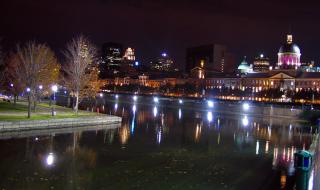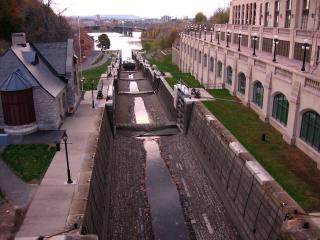
Since July 16th, 1945 the United States has been a nuclear power. The first American thermonuclear weapon was detonated in 1952. During the span of the Cold War, tens of thousands of hydrogen bombs were assembled and mounted inside artillery shells, torpedoes, submarine launched missiles, cruise missiles, land-based ICBMs, and aircraft-mounted bombs. Now, these weapons are starting to age and a debate has emerged on what should be done with them.
Many of these weapons are highly complex. A standard submarine-based missile has a conical warhead. Inside is a uranium casing that serves to contain the original blast until a maximum amount of fission has occurred. At the bottom of that casing is a ‘pit’ of plutonium which is at a sub-critical density. Around that is a casing of brittle, toxic, neutron-reflecting beryllium. Inside it may be a cavity containing tritium and deuterium gas (in the case of a “boosted” primary). Around the beryllium outer sphere is a shell of high explosives designed to explode with fantastic precision, crush the plutonium pit to supercritical density, and initiate the fission reaction.
This whole assembly exists to initiate fusion in the ‘secondary,’ located higher in the outer uranium casing. The material that undergoes fusion – usually lithium deuteride – is wrapped around another sphere of uranium and is, in turn, wrapped in more uranium. All this is to create the largest possible yield in a relatively small and light package. The small size and conical shape allow eight or more of these devices to be placed on a single missile and then independently targeted once that missile is at the height of its ascent.
The 2008 budget allocated $6.5 billion for the maintenance of the American nuclear stockpile. That consists of 9,900 assembled warheads – 5,700 of them deployed operationally. In addition to these, about 7,000 plutonium pits are stored at the Pantex Plant in Amarillo, Texas. As the weapons age, concerns are developing about their reliability. They all contain high explosives, toxic chemicals, and corrosive agents. While it is possible to upgrade many of the non-nuclear components and replace them with more stable variants, the newly assembled bombs could not legally be tested: potentially leaving military commanders in doubt about their usability.
That is, in essence, the core of the ongoing debate about the Reliable Replacement Warhead (RRW). The program would begin by refurbishing 100 kiloton W76 warheads, which is already undergoing a less ambitious retrofitting. The hope is that the program can produce weapons with long durability and lower maintenance costs, and be able to do so without requiring full-scale tests of the devices, as were conducted in Nevada and the Marshall Islands during the Cold War. I won’t get into the details of the debate here. More than sufficient information exists online and in recent newspapers and magazines. What is less frequently considered are some of the aspects of international law relevant to nuclear weapons.
The whole program should remind people about an oft-forgotten element of the Nuclear Non-Proliferation Treaty. Everyone remembers the bit about signatories without nuclear weapons pledging not to acquire them. People forget that the treaty also obliges existing nuclear powers to reduce their arsenals as part of an overall progression towards de-nuclearization. Upgrading your nuclear arsenal to endure further decades of operational status is hardly consistent with this requirement. It also signals to other states that the United States continues to consider operationally deployed nuclear weapons an important part of their overall military strategy.
Individuals and organizations contemplating a sizable RRW program might also do well to re-read the Advisory Opinion on the Legality of the Threat or use of Nuclear Weapons set down by the International Court of Justice. While such legal considerations are relatively unlikely to affect whatever decisions are made in relation to the RRW, examining the status of the law can be a good way to reach decisions about the respective rights and obligations of states.







